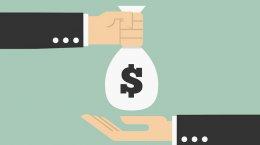The US Federal Reserve’s meeting on Tuesday is likely to be one of its most difficult and divisive since, well, last August.
Sharply weaker economic data in recent weeks, a new peak in the eurozone debt crisis, and a downgrade to the triple A credit rating of the US have shaken confidence in a way that could spiral towards a new recession. The Fed will be forced to consider fresh stimulus in response.
But, despite those recent shocks, Fed policymakers still have reasons to think that growth should pick up later in the year. Oil prices are now about $25 a barrel below their springtime peak; supply chain disruption from the Japanese tsunami should fade; and, unlike last summer, inflation is close to target and has been rising, not falling.
On the one hand will be an argument that, with markets desperate for succour, to do nothing would make a bad situation worse. On the other will be deep reluctance – and not only by policymakers who have long opposed more stimulus – to make monetary decisions that take a year or two to affect the economy in response to a market swoon.
The rate-setting Federal open market committee has 17 members at present and struggles with abrupt changes of direction. To make matters even more difficult, much has happened since the Fed entered its pre-meeting purdah on August 2, so FOMC policymakers have had no chance to signal any change in views. The meeting will be unpredictable.
If the Fed does want to do something, then its options are the same as they have been for the past couple of years.
First, the Fed could launch an “Operation Twist†on the yield curve, selling short-term Treasuries and buying long-dated bonds with the aim of driving down long-term yields. But the Fed considered buying longer-term assets last November and explicitly decided not to. Money markets would appreciate the extra short-term assets – but that may not matter enough to sway monetary policy.
Second, the Fed could cut the rate it pays on banks’ excess reserves from 25 basis points to 10bp. That again is an option it explicitly rejected last November. Since then, a new deposit insurance fee has driven down short-term market interest rates, so to cut the rate on excess reserves might further hamper market functioning.
Third might be a third round of quantitative easing or “QE3â€. But imagine that the Fed bought another $600bn of assets. That not only eases monetary policy today – if the action is credible, then it locks in easier monetary policy for the eight months that it would take to carry out the purchases. If there is any doubt about inflation, then the Fed will be reluctant to tie its hands so far into the future.
A similar objection applies to option four: a promise to keep rates lower for even longer than the current “extended period†or to make a similar promise about its balance sheet.
The earliest such a pledge could be reversed is September. The Fed has signalled that an “extended period†means two or three meetings after that. An “extended period†pledge for the balance sheet therefore would tie the Fed’s hands until early next year. If the FOMC does not expect to move in that time, it might judge that such a move has little cost – but then, equally, there is little benefit.
That leaves the final option: acknowledgment of the weaker economic data and a robust signal, delivered either on Tuesday or in the chairman’s speech at Jackson Hole on August 26, that the Fed is willing to act to counter any deflation risks that emerge.
Such has been the plunge in markets that the Fed may now feel that it has to do something. For example, it could combine strong language with a “mini twistâ€, reinvesting maturing securities from its portfolio into longer-term assets.
But the crucial point is that none of these options are especially appealing. They all come with costs and those that are easier to do will not impart much stimulus to the economy. That means the greater risk to markets is that the Fed is cautious and does less than they demand on Tuesday.
More News From Financial Times





